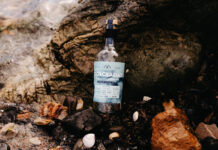
AS operators use the early weeks of a new year to review their business, it’s fair to suggest some will be looking at their wine offer.
With wholesalers now introducing new wines to customers at tastings, and a need to give consumers good reasons to visit the on-trade, some say it’s a good time to try new things out.
But before settling on an entirely new offer for the year ahead, the advice, it seems, is to wait. That’s chiefly because merchants usually publish their new lists (and prices) in spring and the Budget in March is expected to bring a rise in wine duty.
“Really good restaurateurs keep their lists under constant review, so a January refresh of a wine list is a great idea,” said Joe Fattorini, director of sales north at Bidendum.
“It can be a great way to try a few things and see if they’ll work before a more substantial list re-write in the spring.
“But if people want to keep their pricing and structure for more than a couple of months, then it’s not the best time.
“Duty rates and supplier price increases come together in March/April and that gives those who want to maintain a list across the summer and into winter more certainty on pricing.”
Other suppliers expressed a similar view, including Inverarity Vaults, now part of wholesaler Wm Morton.
The firm’s Tarquin de Burgh said that with stock depletion high after the festive period – “meaning you should be able to see fairly easily what has worked and what hasn’t” – and trade generally quiet, the first weeks of a new year can be useful for “gathering information” on new supplier offers and planning ahead.
Like Fattorini, however, he urged business owners to tread cautiously over new prices until consulting their suppliers over their plans for the year.
“I would always recommend speaking to your wine rep to find out what changes, if any, they will be making to their lists and pricing structure,” he said. “You can never predict exactly what will happen around the Budget [and can] only go on previous years’ outcomes.
“As long as you set your selling prices to give you a decent margin come any eventuality then you should be in good stead.”
But even if supplier costs and duty go up, price should not be the sole governor of an operator’s buying decisions, according to Annie Holland, wine and spirits development manager for Molson Coors.
“When looking at what to stock and what prices should be, don’t be tempted to think cheapest is best,” she told SLTN. “Having staff confident and knowledgeable about the wines you stock will enable them to give advice to customers, helping them match to food, which will help them up-sell.”
Assuming a pricing structure and margin expectation are in place, one of the next decisions operators face is picking the wine itself.
Michael Colquitt, sales manager for Scotland at on-trade distributor Enotria, said the supplier was getting excited about wines from the following grapes – and challenged operators to make lists more exciting.
“Nero D’Avola, Frappato, Albarinho, Picpoul and Carricante are the most exciting emerging varietals,” he said. “Introduce them to customers through an evolving wine by the glass programme and food and drink matching events.
“The consumer will try new things and spent a bit more, but it needs to be a quality offering that is hand sold to them.
“Too many outlets are lazy and trot out the same bland lists with no thought or real effort.
“When faced with this, the consumer resorts to Pinot Grigio, Sauvignon Blanc, Merlot or Cabernet Sauvignon, by the glass, as a safety net.”
Fattorini at Bibendum pointed to emerging varietals from Spain, including Godello (white, Galicia) and Frappato as wines worth investigating, but said operators and their suppliers have to work hard to convince consumers that they will get value from the bottle they choose.
“Restaurateurs and wine merchants have to work together to make wine lists relevant for people and bring them to life,” he said.
“A great bottle of wine really enhances a meal, but to help people see that and appreciate the value in that experience takes a bit of effort.”
“Quality” and “value” were also cited by De Burgh at Inverarity as the key sweetspots operators should aim for when reviewing their lists.
“It’s what consumers expect, and now they’re even more demanding in their expectations,” he said.
“There’s no sign of that changing in the near future.”
Faced with higher prices when buying wine, and a consumer base with less cash to spend, the task of selling wine looks like it will be tough for operators this year. But Holland at Molson Coors said it need not be impossible.
“The greatest opportunity lies in having smaller, more thoughtful [lists] which find innovative and relevant ways to introduce people to wines they’ll love,” she said.



















